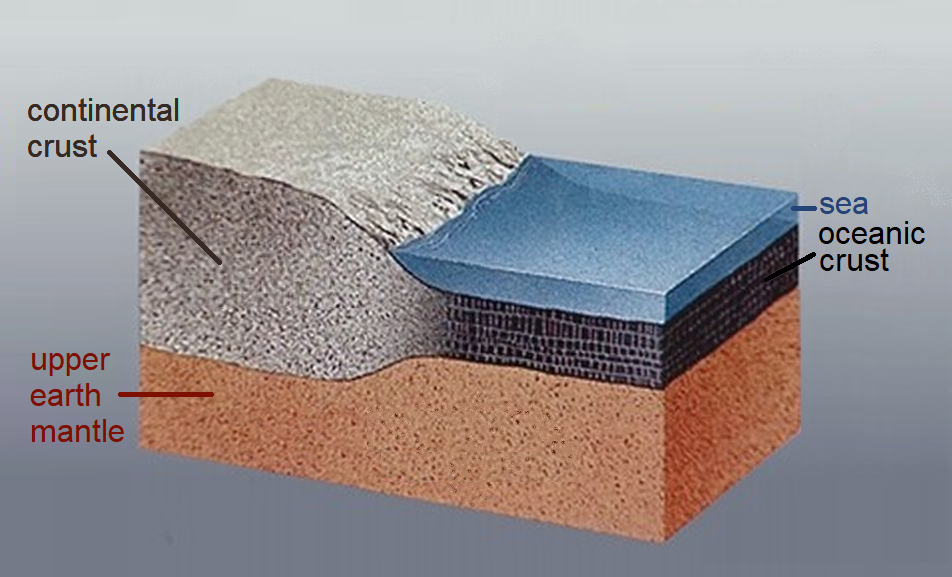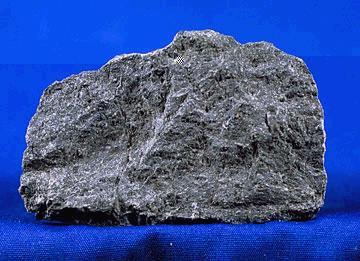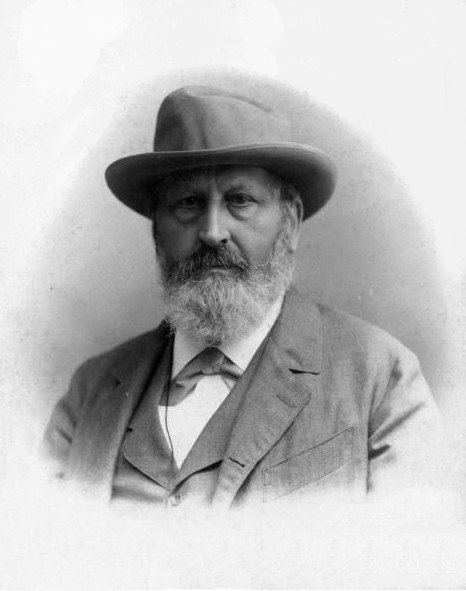|
Sial
In geology, sial is an antiquated blended term for the composition of the upper layer of Earth's crust, namely rocks rich in aluminium silicate minerals. It is sometimes equated with the continental crust because it is absent in the wide oceanic basins, but 'sial' is a geochemical term rather than a plate tectonic term. As these elements are less dense than the majority of Earth's elements, they tend to be concentrated in the upper layer of the crust. The uppermost layer of the crust is called the sial, consisting of silicate and aluminium (Si = silicate, Al = aluminium). On average, the thickness of the sial is till 25 km from the surface. The continents are composed mainly of lighter rock material formed from silicon and aluminium, so the sial is thick over the continents and very thin or absent on the ocean floor, especially the Pacific Ocean. Average density of the sial is 2.7 g/cm3. Geologists often refer to the rocks in this layer as felsic, because they contain high le ... [...More Info...] [...Related Items...] OR: [Wikipedia] [Google] [Baidu] |
Plate Tectonics
Plate tectonics (, ) is the scientific theory that the Earth's lithosphere comprises a number of large tectonic plates, which have been slowly moving since 3–4 billion years ago. The model builds on the concept of , an idea developed during the first decades of the 20th century. Plate tectonics came to be accepted by Earth science, geoscientists after seafloor spreading was validated in the mid-to-late 1960s. The processes that result in plates and shape Earth's crust are called ''tectonics''. Tectonic plates also occur in other planets and moons. Earth's lithosphere, the rigid outer shell of the planet including the crust (geology), crust and upper mantle, is fractured into seven or eight major plates (depending on how they are defined) and many minor plates or "platelets". Where the plates meet, their relative motion determines the type of plate boundary (or fault (geology), fault): , , or . The relative movement of the plates typically ranges from zero to 10 cm annu ... [...More Info...] [...Related Items...] OR: [Wikipedia] [Google] [Baidu] |
Conrad Discontinuity
The Conrad discontinuity corresponds to the sub-horizontal boundary in the continental crust at which the seismic wave velocity increases in a discontinuous way. This boundary is observed in various continental regions at a depth of 15 to 20 km, but it is not found in oceanic regions. The Conrad discontinuity (named after the seismologist Victor Conrad) is considered to be the border between the upper continental (sial, for silica-aluminium) crust and the lower one (sima, for silica-magnesium). It is not as pronounced as the Mohorovičić discontinuity and absent in some continental regions. Up to the middle 20th century, the upper crust in continental regions was seen to consist of felsic rocks such as granite ( sial), and the lower one to consist of more magnesium-rich mafic rocks like basalt (sima). Therefore, the seismologists of that time considered that the Conrad discontinuity should correspond to a sharply defined contact between the chemically distinct two layers ... [...More Info...] [...Related Items...] OR: [Wikipedia] [Google] [Baidu] |
Google Books
Google Books (previously known as Google Book Search, Google Print, and by its code-name Project Ocean) is a service from Google that searches the full text of books and magazines that Google has scanned, converted to text using optical character recognition (OCR), and stored in its digital database.The basic Google book link is found at: https://books.google.com/ . The "advanced" interface allowing more specific searches is found at: https://books.google.com/advanced_book_search Books are provided either by publishers and authors through the Google Books Partner Program, or by Google's library partners through the Library Project. Additionally, Google has partnered with a number of magazine publishers to digitize their archives. The Publisher Program was first known as Google Print when it was introduced at the Frankfurt Book Fair in October 2004. The Google Books Library Project, which scans works in the collections of library partners and adds them to the digital inventory, ... [...More Info...] [...Related Items...] OR: [Wikipedia] [Google] [Baidu] |
Continental Crust
Continental crust is the layer of igneous, metamorphic, and sedimentary rocks that forms the geological continents and the areas of shallow seabed close to their shores, known as '' continental shelves''. This layer is sometimes called '' sial'' because its bulk composition is richer in aluminium silicates (Al-Si) and has a lower density compared to the oceanic crust, called '' sima'' which is richer in magnesium silicate (Mg-Si) minerals. Changes in seismic wave velocities have shown that at a certain depth (the Conrad discontinuity), there is a reasonably sharp contrast between the more felsic upper continental crust and the lower continental crust, which is more mafic in character. Most continental crust is dry land above sea level. However, 94% of the Zealandia continental crust region is submerged beneath the Pacific Ocean, with New Zealand constituting 93% of the above-water portion. Thickness and density The continental crust consists of various layers, with ... [...More Info...] [...Related Items...] OR: [Wikipedia] [Google] [Baidu] |
Sima (geology)
In geology, sima () is an antiquated Blend word, blended term for the lower layer of Earth's crust (geology), crust. This layer is made of rocks rich in magnesium silicate minerals. Typically, when the sima comes to the surface, it is basalt, so sometimes this layer is called the 'ocean layer' of the crust. The sima layer is also called the 'basal crust' or 'basal layer' because it is the lowest layer of the crust. Because the ocean floors are mainly sima, it is also sometimes called the 'oceanic crust'. The name 'sima' was taken from the first two letters of silicon dioxide, silica and of magnesium oxide, magnesia. Comparable is the term ''sial'' (another antiquated blended term), which is the name for the upper layer of Earth's crust (continental crust) , namely rocks rich in aluminium Silicate mineral, silicate minerals. Petrology The sima has a higher density (2800 to 3300 kg/m3) than the sial, which is due to larger amounts of iron and magnesium, and smaller amounts of ... [...More Info...] [...Related Items...] OR: [Wikipedia] [Google] [Baidu] |
Earth
Earth is the third planet from the Sun and the only astronomical object known to Planetary habitability, harbor life. This is enabled by Earth being an ocean world, the only one in the Solar System sustaining liquid surface water. Almost all of Earth's water is contained in its global ocean, covering Water distribution on Earth, 70.8% of Earth's crust. The remaining 29.2% of Earth's crust is land, most of which is located in the form of continental landmasses within Earth's land hemisphere. Most of Earth's land is at least somewhat humid and covered by vegetation, while large Ice sheet, sheets of ice at Polar regions of Earth, Earth's polar polar desert, deserts retain more water than Earth's groundwater, lakes, rivers, and Water vapor#In Earth's atmosphere, atmospheric water combined. Earth's crust consists of slowly moving tectonic plates, which interact to produce mountain ranges, volcanoes, and earthquakes. Earth's outer core, Earth has a liquid outer core that generates a ... [...More Info...] [...Related Items...] OR: [Wikipedia] [Google] [Baidu] |
Eduard Suess
Eduard Suess (; 20 August 1831 – 26 April 1914) was an Austrian geologist and an expert on the geography of the Alps. He is responsible for hypothesising two major former geographical features, the supercontinent Gondwana (proposed in 1861) and the Tethys Ocean. Biography Eduard Suess was born on 20 August 1831 in London, England, the oldest son of Adolph Heinrich Suess, a Lutheran Saxon merchant, and mother Eleonore Friederike Zdekauer. Adolph Heinrich Suess was born on 11 March 1797 in Saxony and died on 24 May 1862 in Vienna; Eleonore Friederike Zdekauer was born in Prague, now part of the Czech Republic, which once belonged to the Holy Roman Empire and the Austrian Empire. When Eduard Suess was an infant, his family relocated to Prague, and then to Vienna when he was 14. He became interested in geology at a young age. At the age of 19, while working as an assistant at the Hofmuseum in Vienna, he published his first paper—on the geology of Carlsbad (now Karlovy Vary ... [...More Info...] [...Related Items...] OR: [Wikipedia] [Google] [Baidu] |
Cambridge University Press
Cambridge University Press was the university press of the University of Cambridge. Granted a letters patent by King Henry VIII in 1534, it was the oldest university press in the world. Cambridge University Press merged with Cambridge Assessment to form Cambridge University Press and Assessment under Queen Elizabeth II's approval in August 2021. With a global sales presence, publishing hubs, and offices in more than 40 countries, it published over 50,000 titles by authors from over 100 countries. Its publications include more than 420 academic journals, monographs, reference works, school and university textbooks, and English language teaching and learning publications. It also published Bibles, runs a bookshop in Cambridge, sells through Amazon, and has a conference venues business in Cambridge at the Pitt Building and the Sir Geoffrey Cass Sports and Social Centre. It also served as the King's Printer. Cambridge University Press, as part of the University of Cambridge, was a ... [...More Info...] [...Related Items...] OR: [Wikipedia] [Google] [Baidu] |
Precambrian Granite St Francis Mountains Missouri
The Precambrian ( ; or pre-Cambrian, sometimes abbreviated pC, or Cryptozoic) is the earliest part of Earth's history, set before the current Phanerozoic Eon. The Precambrian is so named because it preceded the Cambrian, the first period of the Phanerozoic Eon, which is named after Cambria, the Latinized name for Wales, where rocks from this age were first studied. The Precambrian accounts for 88% of the Earth's geologic time. The Precambrian is an informal unit of geologic time, subdivided into three eons (Hadean, Archean, Proterozoic) of the geologic time scale. It spans from the formation of Earth about 4.6 billion years ago ( Ga) to the beginning of the Cambrian Period, about million years ago ( Ma), when hard-shelled creatures first appeared in abundance. Overview Relatively little is known about the Precambrian, despite it making up roughly seven-eighths of the Earth's history, and what is known has largely been discovered from the 1960s onwards. The Precambrian fossil ... [...More Info...] [...Related Items...] OR: [Wikipedia] [Google] [Baidu] |
Planetary Core
A planetary core consists of the innermost layers of a planet. Cores may be entirely liquid, or a mixture of solid and liquid layers as is the case in the Earth. In the Solar System, core sizes range from about 20% (the Moon) to 85% of a planet's radius ( Mercury). Gas giants also have cores, though the composition of these are still a matter of debate and range in possible composition from traditional stony/iron, to ice or to fluid metallic hydrogen. Gas giant cores are proportionally much smaller than those of terrestrial planets, though they can be considerably larger than the Earth's nevertheless; Jupiter's is 10–30 times heavier than Earth, and exoplanet HD149026 b may have a core 100 times the mass of the Earth. Planetary cores are challenging to study because they are impossible to reach by drill and there are almost no samples that are definitively from the core. Thus, they are studied via indirect techniques such as seismology, mineral physics, and planetary dyna ... [...More Info...] [...Related Items...] OR: [Wikipedia] [Google] [Baidu] |
Wiley (publisher)
John Wiley & Sons, Inc., commonly known as Wiley (), is an American multinational publishing company that focuses on academic publishing and instructional materials. The company was founded in 1807 and produces books, journals, and encyclopedias, in print and electronically, as well as online products and services, training materials, and educational materials for undergraduate, graduate, and continuing education students. History The company was established in 1807 when Charles Wiley opened a print shop in Manhattan. The company was the publisher of 19th century American literary figures like James Fenimore Cooper, Washington Irving, Herman Melville, and Edgar Allan Poe, as well as of legal, religious, and other non-fiction titles. The firm took its current name in 1865. Wiley later shifted its focus to scientific, technical, and engineering subject areas, abandoning its literary interests. Wiley's son John (born in Flatbush, New York, October 4, 1808; died in East ... [...More Info...] [...Related Items...] OR: [Wikipedia] [Google] [Baidu] |
Viscosity
Viscosity is a measure of a fluid's rate-dependent drag (physics), resistance to a change in shape or to movement of its neighboring portions relative to one another. For liquids, it corresponds to the informal concept of ''thickness''; for example, syrup has a higher viscosity than water. Viscosity is defined scientifically as a force multiplied by a time divided by an area. Thus its SI units are newton-seconds per metre squared, or pascal-seconds. Viscosity quantifies the internal friction, frictional force between adjacent layers of fluid that are in relative motion. For instance, when a viscous fluid is forced through a tube, it flows more quickly near the tube's center line than near its walls. Experiments show that some stress (physics), stress (such as a pressure difference between the two ends of the tube) is needed to sustain the flow. This is because a force is required to overcome the friction between the layers of the fluid which are in relative motion. For a tube ... [...More Info...] [...Related Items...] OR: [Wikipedia] [Google] [Baidu] |








